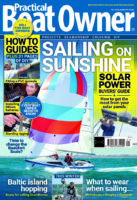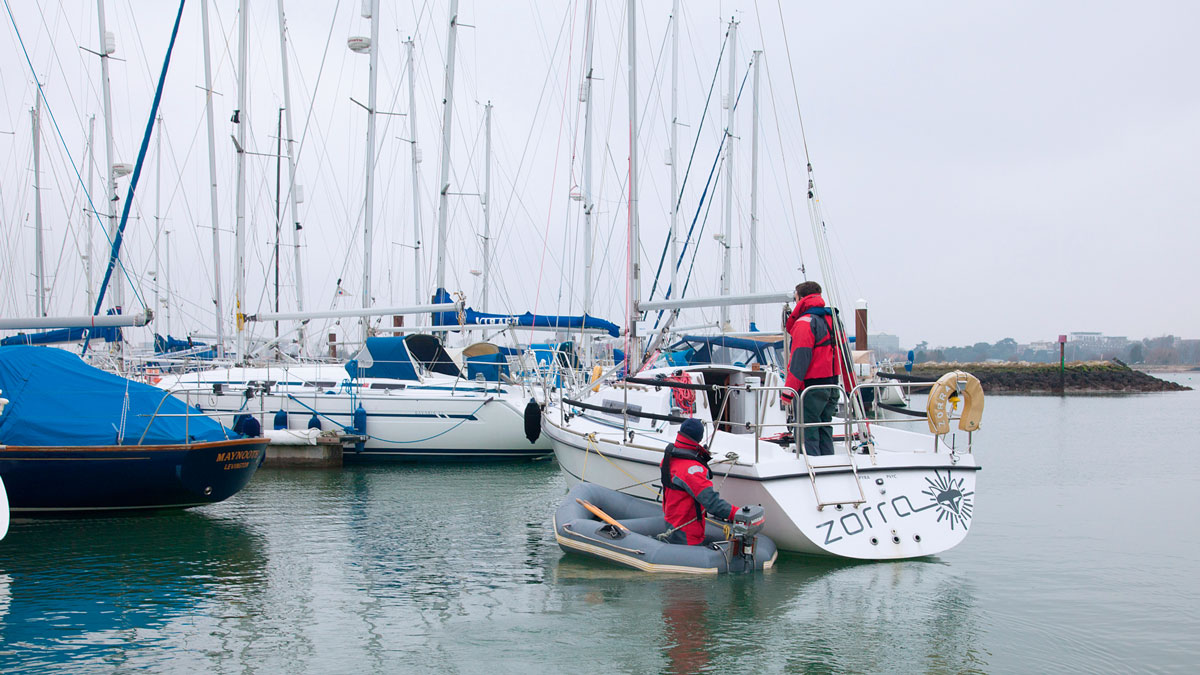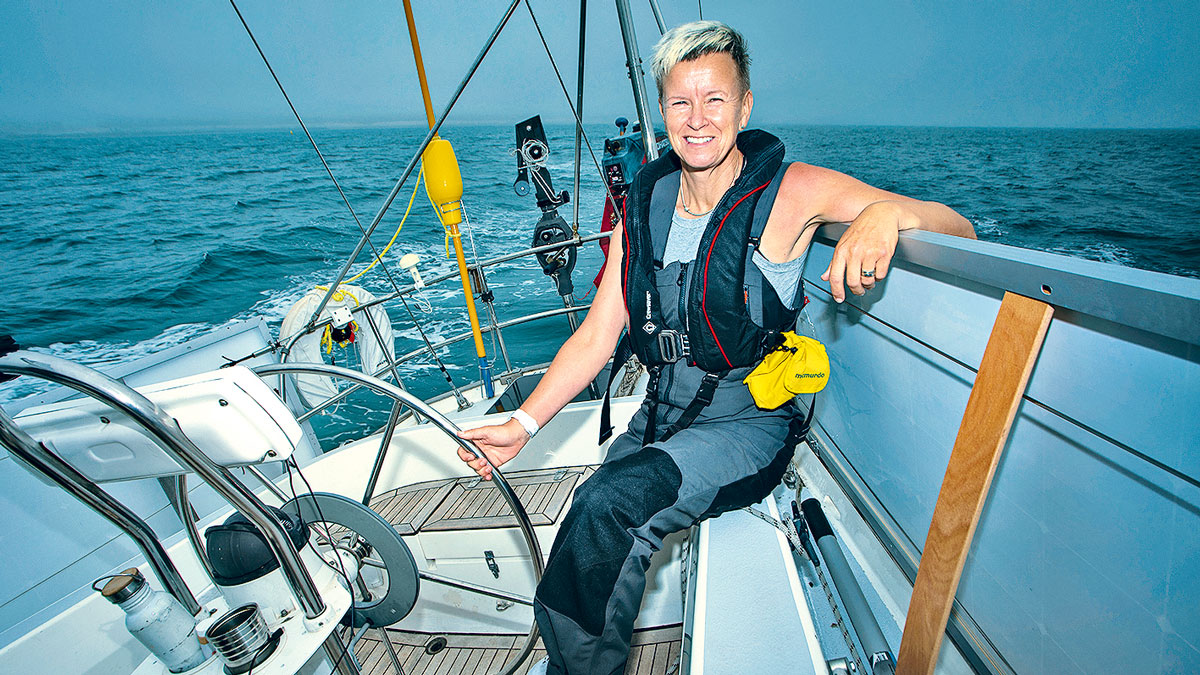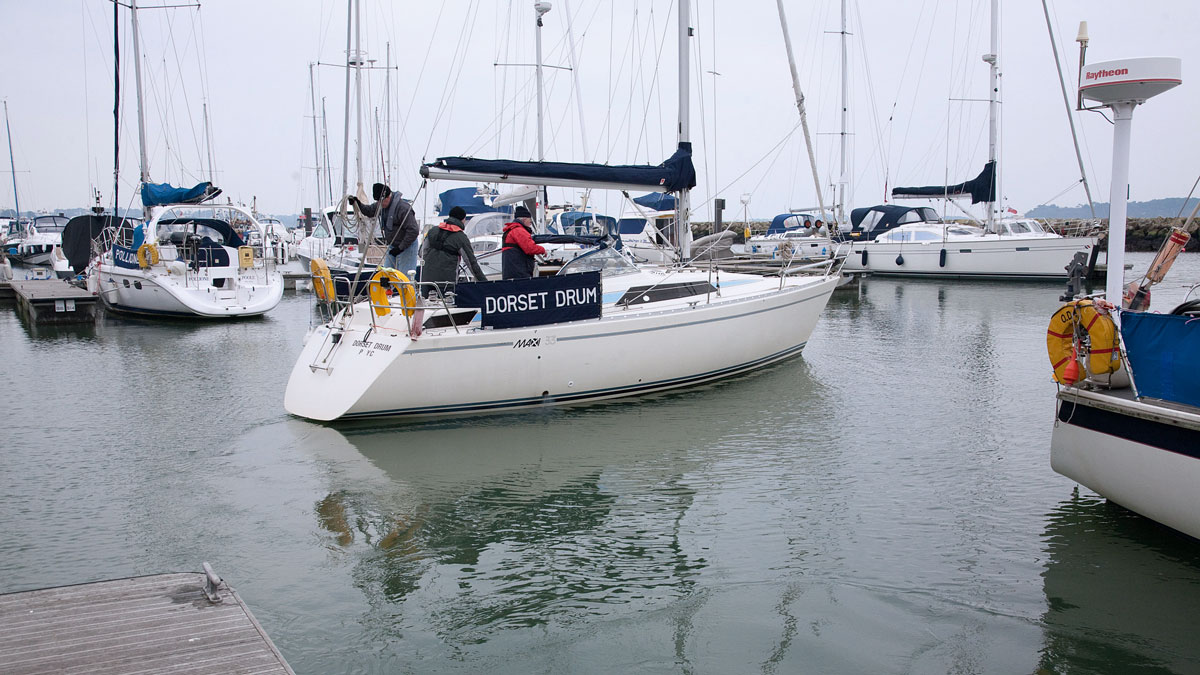Nobody gets every tricky marina manoeuvre right first time – but what do you do if things don’t go as planned? David Harding presents an escape route
Marina berthing is rarely straightforward, especially if the wind and tide are strong or from awkward angles.
If, as in this example, you’re also new to the boat and have never been into that particular berth before, there’s an even greater chance of things going awry.
What matters, however, is not that you pull off a perfect manoeuvre at the first attempt, but that you know how to avoid getting into a pickle if things don’t go as you hoped.

The conditions the crew of Debanessa were dealing with, plus their proposed plan
It’s called having a Plan B, and the more conscious you are of what might go wrong, the better equipped you’ll be to put it into action should the need arise – as it will one day.
Instructor Ricky Chalmers and his crew on Ricky’s Beneteau Oceanis 381, Debanessa, are taking part in an Advanced Sailing weekend task.
Peter is at the helm. Ricky has asked him to reverse Debanessa into the berth on the inside of the hammerhead. The wind was from the south-west, on Debanessa’s starboard bow, and the flood tide was against them as they reversed in.
Marina berthing: Putting Plan B into practice

Credit: David Harding
1. With the stern pointing into the tide, Peter starts reversing about 50 yards upstream of the hammerhead.
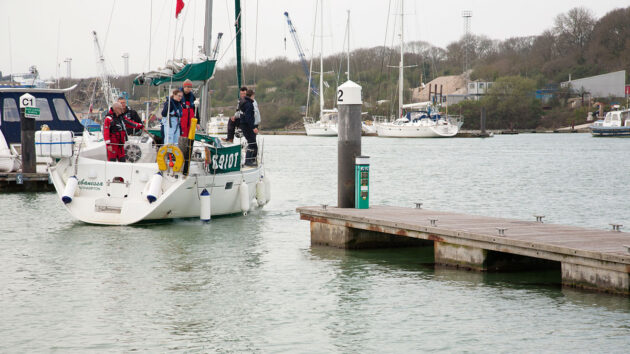
Credit: David Harding
2. Now he turns the wheel to port to bring the boat through the gap between the two hammerheads..
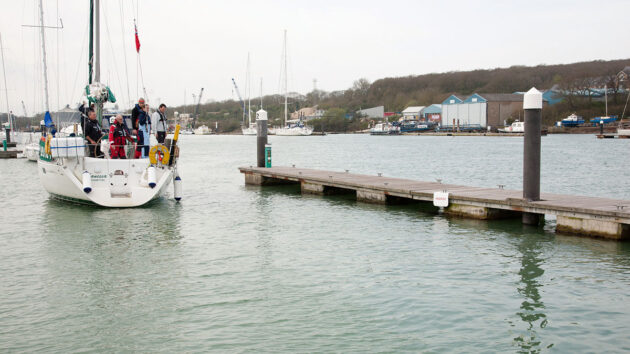
Credit: David Harding
3. ..before turning back to starboard to converge with the pontoon, easing back the throttle to reduce speed at the same time
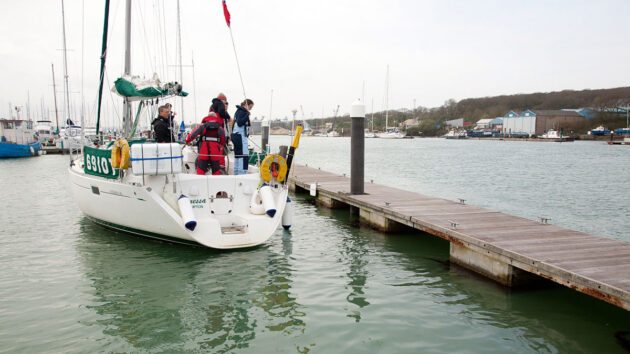
Credit: David Harding
4. So far, so good: Debanessa is closing gently with the pontoon…

Credit: David Harding
5 …but Peter reckons he’s approaching at too much of an angle, with the stern now very close and the bow still some way off.
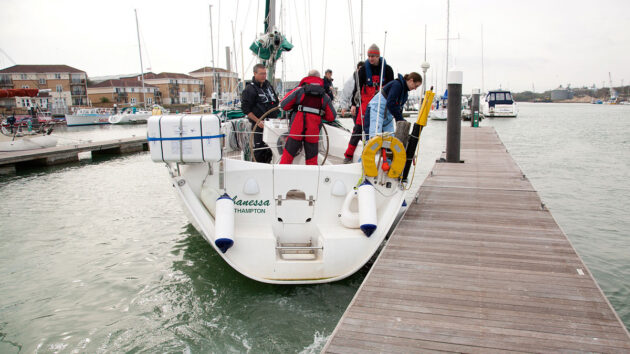
Credit: David Harding
6. He uses a burst of throttle to kick the stern out…
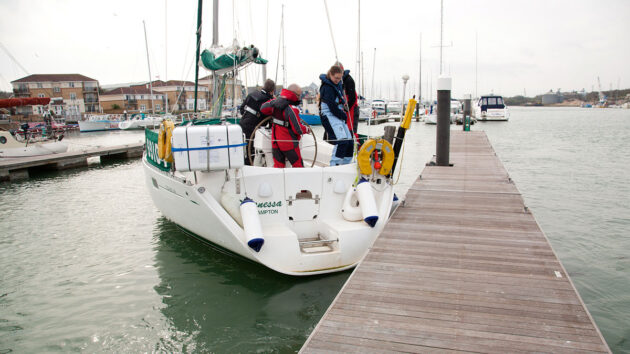
Credit: David Harding
7. ..but, because the wheel is still on port lock, the stern remains tight to the pontoon while the bow swings to port
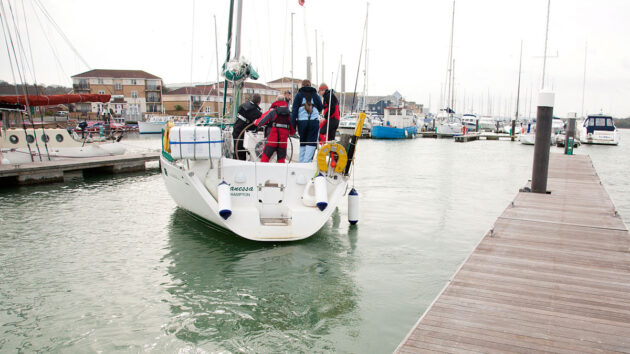
Credit: David Harding
8. Now Debanessa is at an angle midway between the hammerhead and the next pontoon. The wind, stronger than the tide, is beginning to blow her towards the end of the cul-de-sac…
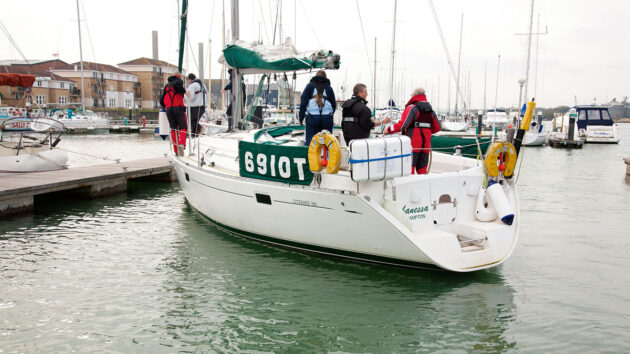
Credit: David Harding
9 …and on to the adjacent pontoon. This isn’t how it was supposed to happen: what next?

Credit: David Harding
10. With the end of the cul-de-sac getting closer, Ricky asks Peter to engage reverse and bring the stern in close to the pontoon
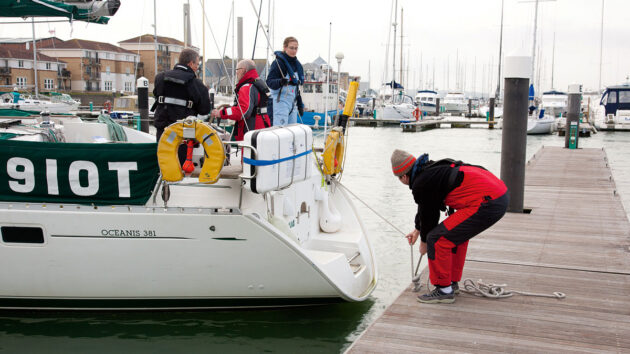
Credit: David Harding
11. This allows Niklaus to step off with a line from the stern and take a turn around a cleat.
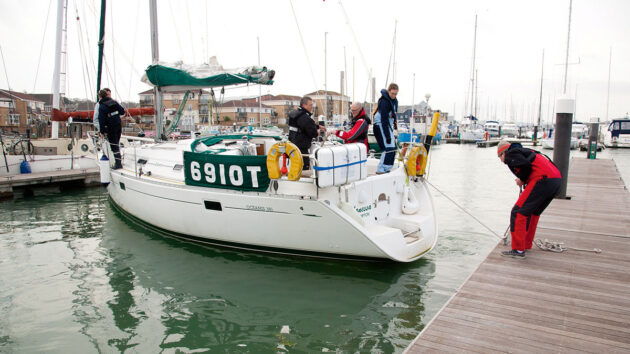
Credit: David Harding
12. Peter now engages forward gear, applies starboard lock..
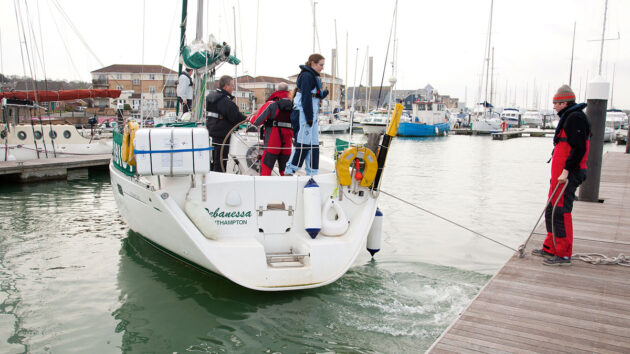
Credit: David Harding
13. ..and, powering against the line, begins to pull the bow around to starboard.
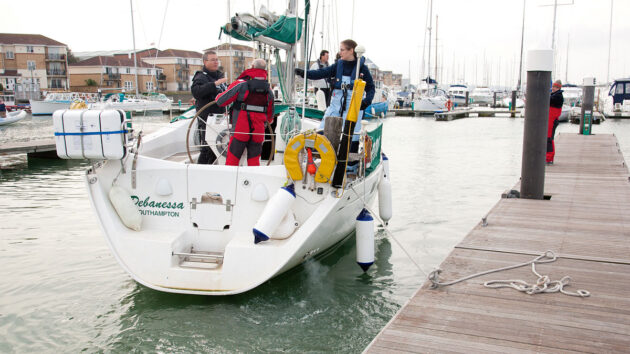
Credit: David Harding
14. With the wind trying to blow the bow off, it takes a while, but there’s no hurry at this stage…
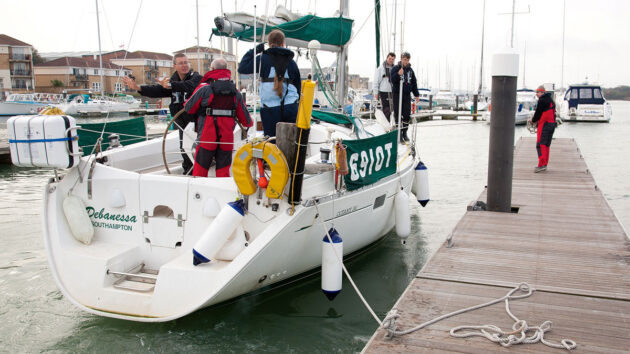
Credit: David Harding
15..and eventually the bow-line can be thrown to Niklaus on the pontoon. Situation rescued!
Lessons learned
Peter’s initial approach wasn’t bad at all, but the wind had kept the bow away from the pontoon while the stern was getting close.
What Peter forgot when giving a burst of ahead was that the wheel was still on the port lock he had applied in reverse to try to swing the stern away from the pontoon.
The effect of the prop wash was to swing the bow further to port: in that situation, starboard lock was needed.
After that, the most important thing was to get the stern attached to the pontoon before the wind blew the boat into the end of the cul-de-sac.
Once a stern-line is secured in a situation like this, you have regained most of your control and, importantly, given yourself time to think.
Boat towing and berthing by tender
If your engine fails to start, being able to berth your boat using the tender is an extremely useful skill,…
Solo sailing tips – anchoring and berthing
Andrew Blyth, who regularly sails his 9m Maurice Griffiths cutter single-handed, describes a selection of methods for dealing with tricky…
Berthing a boat using wind and tide
Manoeuvring a boat into and out of a berth is one of the most frequent handling challenges facing boat owners…
Berthing a vessel: 2 clever ways with warps
In these days of fin keels, bow-thrusters and powerful engines, using warps for marina manoeuvres might seem an old-fashioned irrelevance…
Want to read more seamanship articles like How to cope when marina berthing goes wrong?
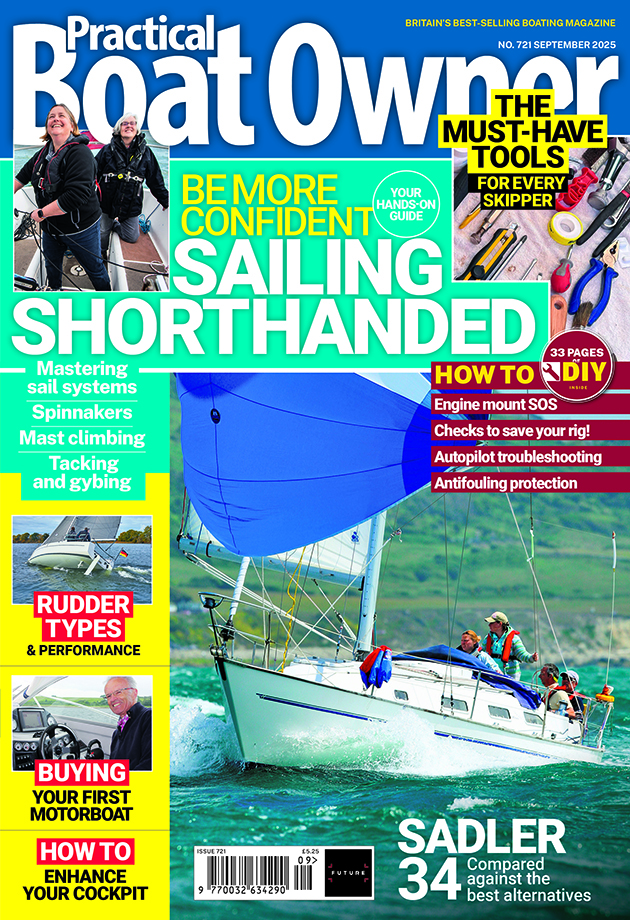
A subscription to Practical Boat Owner magazine costs around 40% less than the cover price.
Print and digital editions are available through Magazines Direct – where you can also find the latest deals.
PBO is packed with information to help you get the most from boat ownership – whether sail or power.
-
-
-
- Take your DIY skills to the next level with trusted advice on boat maintenance and repairs
- Impartial, in-depth gear reviews
- Practical cruising tips for making the most of your time afloat
-
-
Follow us on Facebook, Instagram, TikTok and Twitter

